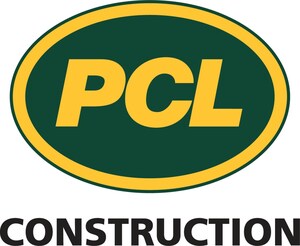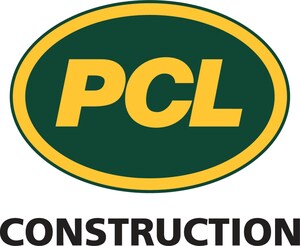Building in Hawaiʻi is more than constructing a client's vision. It brings with it a responsibility to respect the Hawaiian culture and maintain practices that honor the land; something Nordic PCL Construction ensures happens before projects start.
DENVER, May 16, 2022 /PRNewswire/ - Construction, at its foundation, is an activity that interacts with the land. For those working on Nordic PCL projects throughout the Hawaiian Islands, working with the land is deeply connected to Hawaiian culture and beliefs that are rooted in centuries of Polynesian tradition.
"Ancient Hawaiians had a deep respect for the land and believed that everything is alive and everything has a spirit, even the inanimate objects," says Glen Kaneshige, president of Nordic PCL in Honolulu, Hawaii. "They lived off the land and it supported their livelihood – if you take care of the land, the land takes care of you."
That respect is still very relevant in the Hawaiian culture today and is carried forward through ceremonial construction practices that honor the history of project sites.
A Ground Blessing
"In construction on the islands, it's been a long-held belief that before disturbing any site you want to clear the land of energies that might be occupying the space," says Kaneshige.
It is customary to bless the project site before any work is started. A Kahu, or Hawaiian priest, is brought to the site to clear the area and bring peace. Every Kahu has their own process for the ground blessing, but the ceremonies typically include traditional tools tied to the ancient culture.
First, the ti leaf plant, which is considered the 'good luck plant', brings positive energy and is used in the blessing ceremony to sprinkle holy water. The holy water is typically kept in a wooden bowl made from the koa tree, a rare tree found only on the islands and that was an important resource for the ancient Hawaiians. The Kahu will also use Hawaiian salt, which is pink in color from the Hawaiian red clay and believed to absorb negative energy.
The Kahu performs parts of the ceremony in the native Hawaiian language and walks the perimeter or certain areas of the project site to sprinkle the salt and water on the ground. The ground blessing originates in the belief that everything is alive and the spirits of the ancestors that inhabited that land may be still be present. During the ceremony the Kahu explains what is going to happen on the site during construction, asks for permission to disturb the land and blesses the people involved with the project to keep everyone safe.
The ground is then broken using ʻōʻō sticks carved from the koa tree. The ʻōʻōstick was a resourceful tool used in the ancient Hawaiian culture. They are five to seven feet long and either pointed and sharpened on the edges or with flat blades and used by farmers to dig the land. This useful tool also served as a weapon of warfare. The ʻōʻō sticks are used symbolically to disturb the soil out of respect to the Hawaiian ancestors.
A Ribbon Cutting Island Style
A ribbon cutting ceremony is a familiar sight at the completion of construction projects. On the Hawaiian Islands instead of a ribbon, a maile lei, an open garland made from the maile vine, is used to commemorate the opening of a new structure. The maile lei has been used in the Hawaiian culture for centuries to communicate respect, blessing and friendship.
The maile lei is tied at the center and draped across the focal point during the ribbon cutting ceremony. To celebrate the project completion the maile lei is blessed and untied rather than cut. On some occasions the maile lei is framed and hung in the building as a display of honor and respect for the 'Āina.
"'Āina is the Hawaiian word for 'land' and means that which feeds. It encompasses the Hawaiian world view of a reciprocal and familial relationship between people and land," Kaneshige explains.
Respect for the culture
Danyelle Kahanaoi, project manager for Nordic PCL, says there has been a ground blessing for every project she's worked on in Hawaiʻi since joining the company in 2003. Kahanaoi, a native Hawaiian, grew up with an appreciation for the living history of the islands.
Her most recent project is a renovation of two buildings that will be utilized for living quarters on an active military base. "Knowing we were coming onto a military base project, an old site, we wanted to have a blessing before we started any work out here," Kahanaoi says. "It's about much more than the land itself – it's what has happened there and what the space will become."
"I'm proud to be involved with the process and glad we practice it in construction. Many team members are not local to Hawaiʻi so it's a new experience for them. These traditions help people understand our appreciation for the land and hopefully inspires them to treat it with the same respect," says Kahanaoi.
"He aliʻi ka ʻāina; he kauwā ke kanaka." – ʻōlelo noʻeau
"The land is the chief; man is its servant." – Hawaiian proverb
About PCL Construction
PCL is a group of independent construction companies that carries out work across the United States, Canada, the Caribbean, and in Australia. These diverse operations in the civil infrastructure, heavy industrial, and buildings markets are supported by a strategic presence in more than 30 major centers. Together, these companies have an annual construction volume of more than $6 billion USD, making PCL one of the largest contracting organizations in North America. Watch us build at www.pcl.com.
Stephanie Visscher
Public Relations and Media Manager, PCL Construction
[email protected]
303-968-0626
SOURCE PCL Construction

WANT YOUR COMPANY'S NEWS FEATURED ON PRNEWSWIRE.COM?
Newsrooms &
Influencers
Digital Media
Outlets
Journalists
Opted In





Share this article